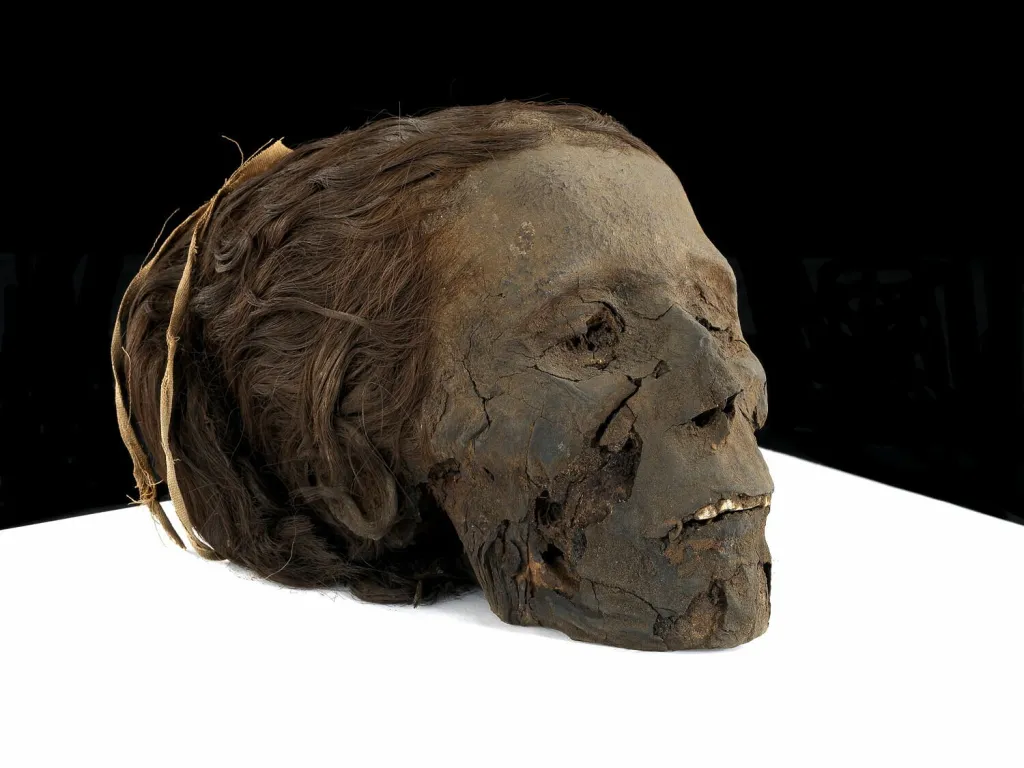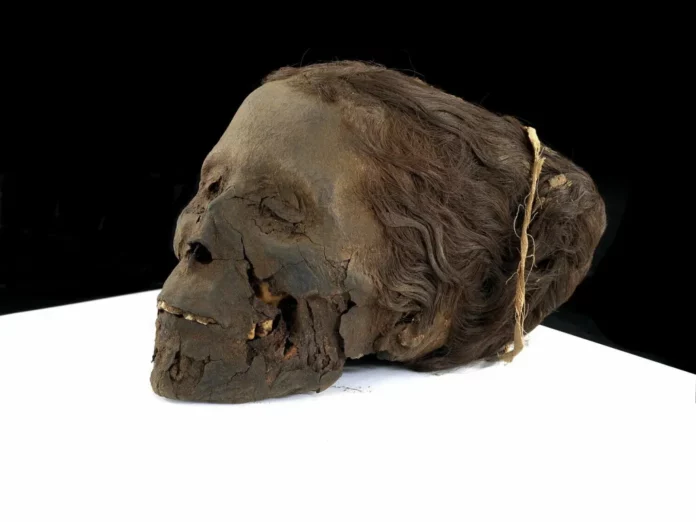In 1799, a remarkable discovery was made in Thebes: the mummified head of a woman, known as the “momie de femme.” Little is known about her identity, but she is believed to have lived between the New Kingdom Period and the Late Period of Ancient Egypt, approximately from 1550 to 332 B.C. This precious artifact, now housed in the Musée du Louvre under the catalog number E 3442, offers a glimpse into the past and the intricate mummification practices of the ancient Egyptians.

In Ancient Egypt, mummification was a sacred and complex process, aimed at preserving the body for the afterlife. Both men and women underwent this meticulous procedure, which included the preservation of their natural hair. The Egyptians placed great importance on personal grooming and appearance, believing that it would continue to be significant in the afterlife. As a result, the hair of the deceased was often carefully styled and maintained.
The preservation of natural hair in mummified remains provides valuable insights into ancient Egyptian hairstyles, hair care practices, and cultural norms surrounding beauty. The hair of mummified individuals was often cleaned and treated with oils or resins by embalmers, who took great care to ensure its preservation. Sometimes, the hair was braided or styled in specific ways, reflecting the individual’s social status or personal preferences. These practices highlight the importance placed on personal appearance and identity in ancient Egyptian culture.

The New Kingdom, commonly known as the Egyptian Empire, spanned from the 16th to the 11th centuries B.C. This period, including the Eighteenth, Nineteenth, and Twentieth Dynasties, was a time of great prosperity and power for Egypt. It followed the Second Intermediate Period and preceded the Third Intermediate Period. Radiocarbon dating places the establishment of the New Kingdom between 1570 and 1544 B.C.
The Late Period of Ancient Egypt, from 664 to 332 B.C., marked the final era of native Egyptian rulers before foreign domination. This period included the 26th Saite Dynasty and the subsequent Achaemenid Persian rule following Cambyses II’s conquest in 525 B.C. The Late Period concluded with Alexander the Great’s conquest of the Persian Empire and the establishment of the Ptolemaic dynasty by his general, Ptolemy I Soter.

Musée du Louvre, Département des Antiquités égyptiennes, E 3442.
Nectanebo I overthrew Nepherites II in 380 B.C., and the Achaemenid ruler Artaxerxes III invaded Egypt in 343 B.C., leading to the disestablishment of the kingdom. This marked the end of Ancient Egypt’s last native dynasty. Following the overthrow of Nectanebo II, Egypt fell under foreign rule, with significant changes in its governance and culture.
The discovery of the mummified head in Thebes not only offers a tangible connection to the past but also underscores the rich and intricate history of Ancient Egypt. Through such artifacts, we gain a deeper understanding of the cultural practices, beliefs, and daily life of a civilization that continues to fascinate and inspire us today.
Source: https://egypt-museum.com/head-of-a-woman/




